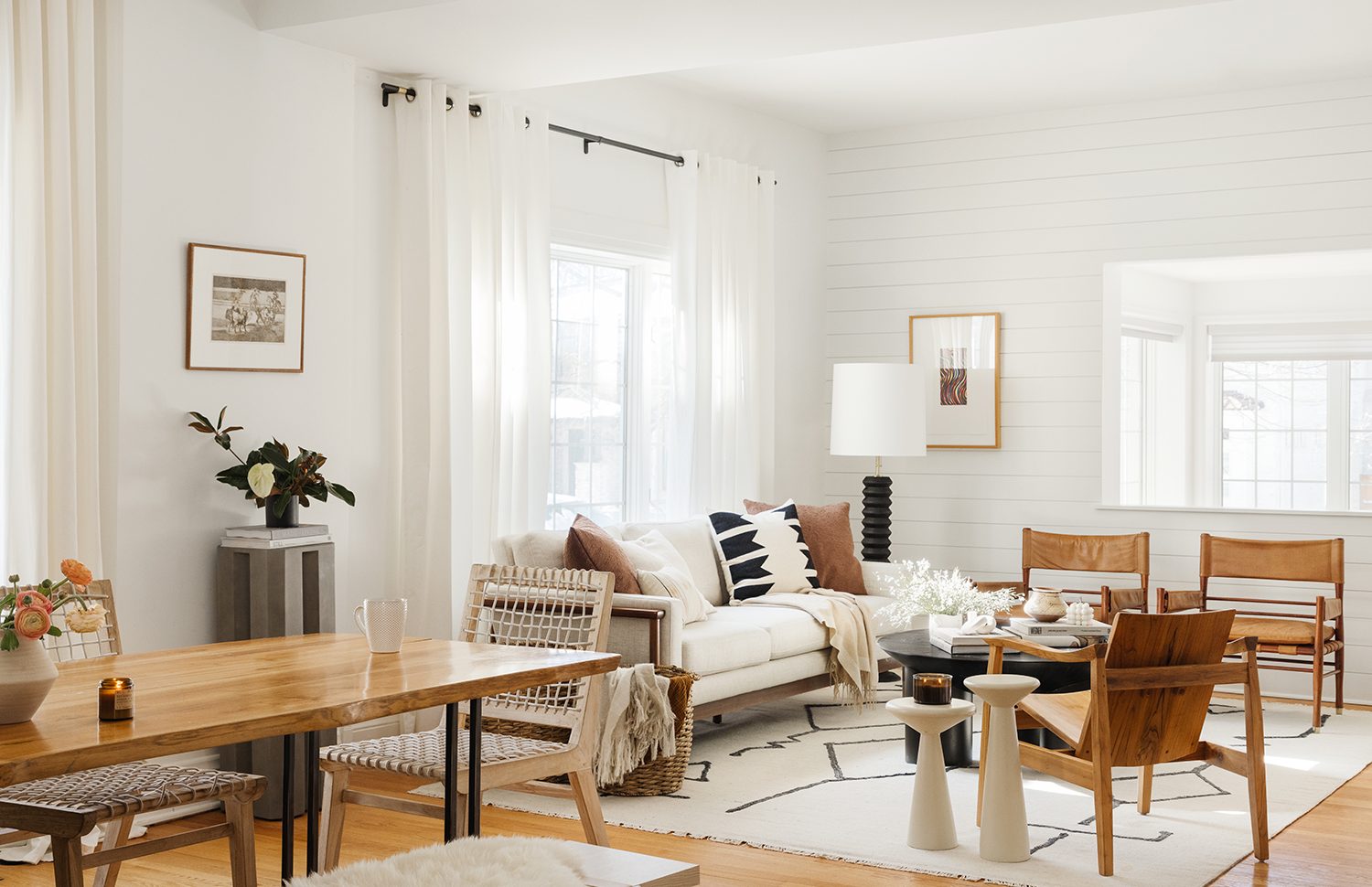Let’s cut to the chase and start with a pointed question: what is balance in interior design? Pulling straight from the design 101 playbook, balance refers to the artful distribution of visual weight in a space to create a sense of stability. While an unbalanced space will immediately feel off, a balanced room leans relaxing and harmonious.
It’s easiest to illustrate through example, so here goes: First, imagine a fireplace mantle. If you arrange all the decor on the right, with nothing to offset that visual weight on the left (not even a chair below), it will likely feel too heavy on one side and off-kilter overall. To create a balanced space, you need something — be it a single vase, candle, or the aforementioned chair underneath — to counteract that visual weight.
Remember: it’s not all about symmetry — that can get boring quickly. Rather, it’s about achieving calming, asymmetrical balance that pleases the eye. While there’s no formal rulebook (we recommend arranging and rearranging until you’re satisfied), the following eight tips, gleaned from our design team, are a good place to start:
1. When in doubt, start with symmetry
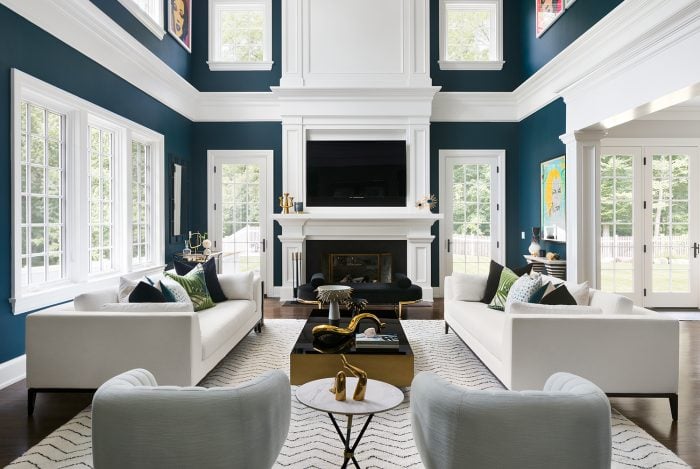
Symmetry is arguably the most time-honored, obvious, and easiest way to achieve balance in a space. For the uninitiated, symmetry in design refers to creating a mirror image of a scene, like matching nightstands on either side of a perfectly-centered bed, or matching sofas flanking a fireplace. Symmetry ensures that visual weight is evenly distributed around a singular focal point, almost to a fault. This is a more traditional look, but it’s undeniably calming. Plus, you can always add an edge via bold color, funky pattern, and sculptural silhouettes!
2. Keep things interesting with asymmetry
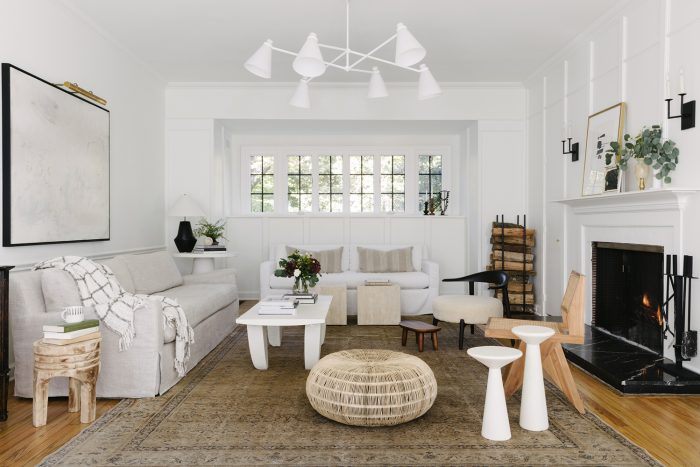
On the opposite end of the spectrum, asymmetrical spaces feature varied objects on either side of center, thoughtfully arranged to create balance. Take this living room, for example. It features mis-matched sofas, accent chairs, and side tables, yet still feels evenly weighted — thanks in part to the symmetrical mantel sconces and wall paneling, as well as the tight color palette. Embracing asymmetry definitely takes a sharp eye, but doing so creates less structured, more intriguing spaces.
3. Remember: size matters
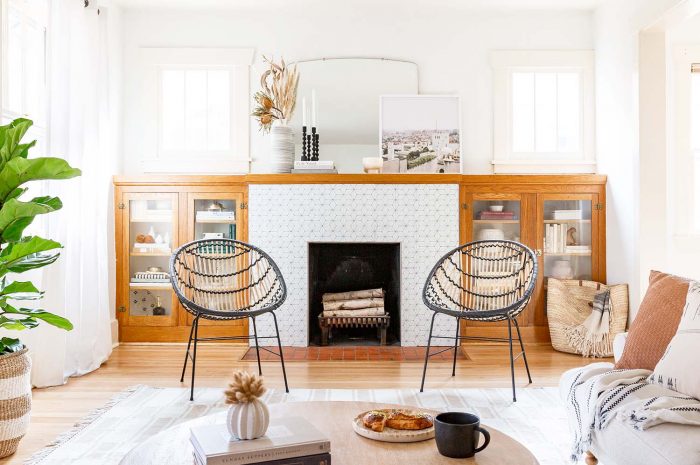
When in doubt, always mix up the size and shape of decorative objects. Take this mantle moment, for example. The more angular, large-scale artwork and mirror paired with the more slender vases and candlesticks creates a visually balanced display — even if the items are totally different.
4. Always consider silhouette
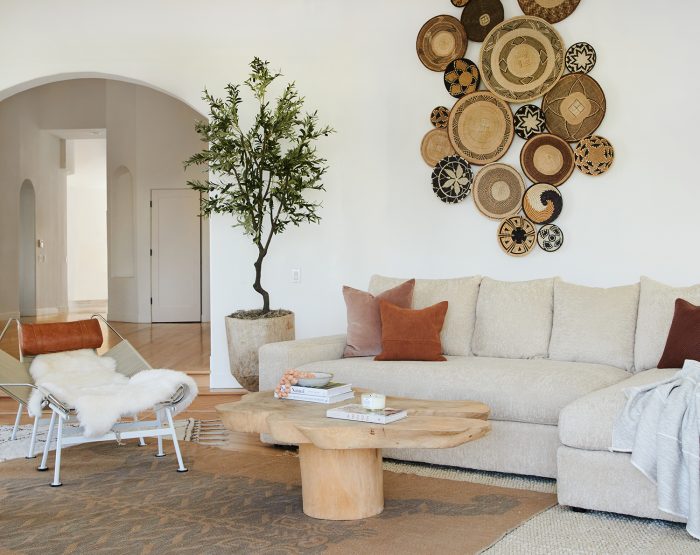
Design tentpole number one: never go the matchy-matchy route, be it a bedroom furniture set or an all-wood dining table and chairs situation. To achieve balance, mix chunkier furniture pieces with more airy options, like this cozy, low-slung sectional next to the pillared, abstract coffee table and light framed chair. As always, the magic is in the mix!
5. Mix & match heights
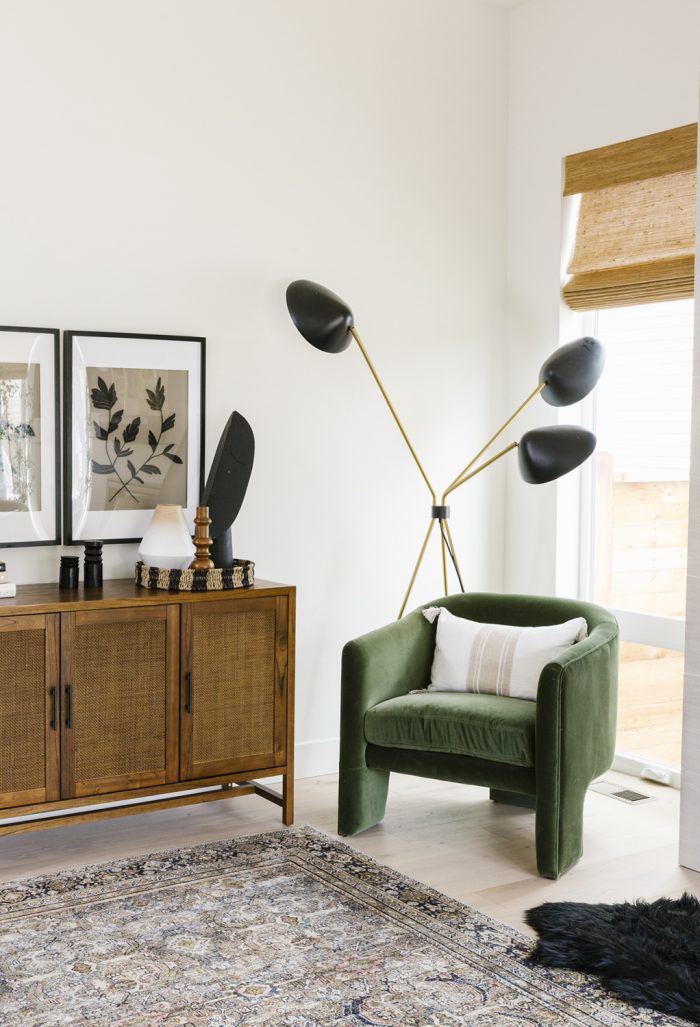
From furniture to decor and lighting, design elements should fall on different vertical planes. If you have a low-slung chair, credenza, and artwork all occupying the same two-to-three feet of wall space, add a tall element, like a statement floor lamp. When in doubt, throw a tall statement plant, lamp, oversized vase, or hanging planter into a sparse corner for a pop of height.
6. Contrast is your best friend
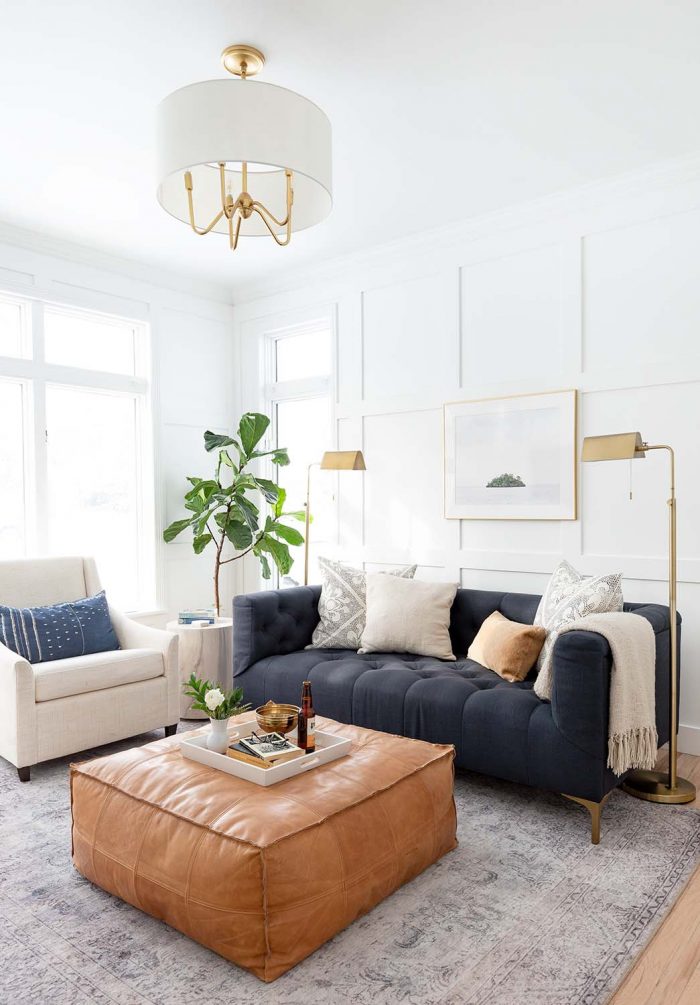
When it comes to color palette and materials, contrast is incredibly important. Rather than embracing a dull gray-on-gray palette, for example, add a pop of graphic black or warm cognac for a visual pop. The same goes for fabrics and textures — all leather or all linen everything gets boring fast, while a velvet sofa, leather ottoman, linen accent chair, and a patterned rug feels layered and interesting.
7. Negative space is *crucial*
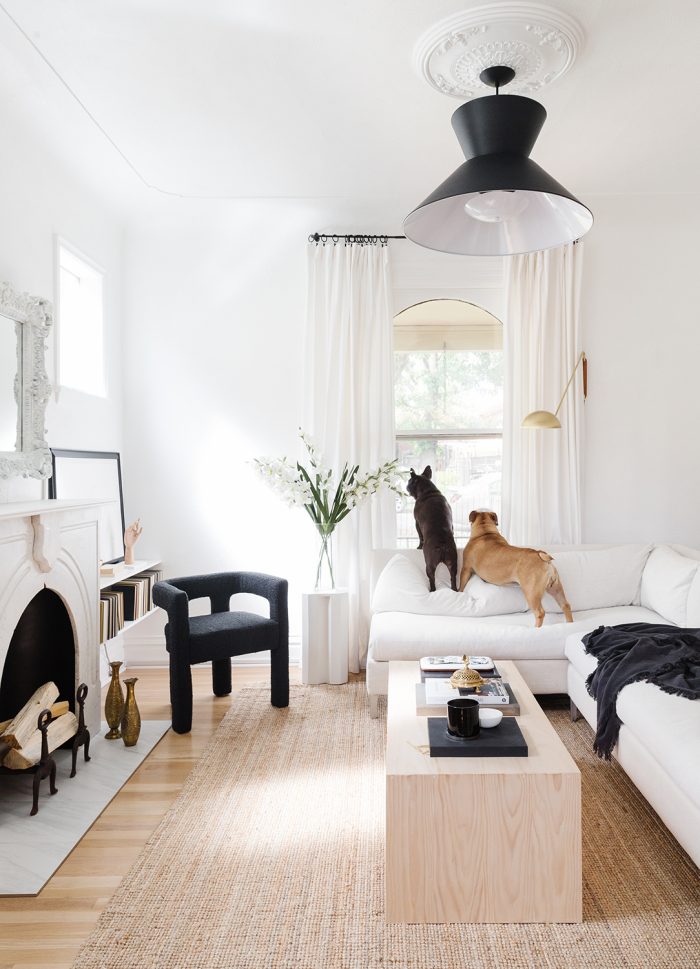
Say it with us: breathing room. Sometimes all a space needs is absolutely nothing at all. Balance out a busy gallery wall or patterned drapes with clean, blank wall space. You don’t have to hang a knick-knack, wall sconce, or wall hook on every conceivable surface. When in doubt, let an unadorned wall shine in all its simple glory.
8. Don't forget to edit
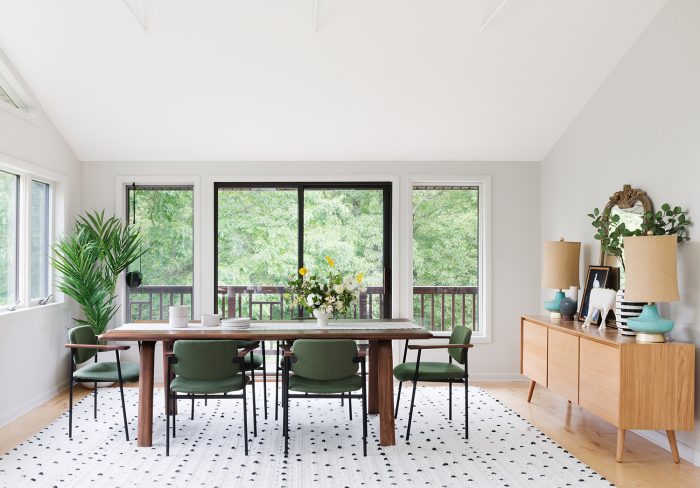
Creating balance in interior design is an art form, and by extension, a never-ending work in progress. Don’t be afraid to rearrange, add, subtract, and completely start over as your design style evolves. When you’re stuck, leave the room and revisit it the next day for a fresh set of eyes. And remember: sometimes you need to take something away to make a vignette feel harmonious.
From balance 101 to perfecting room flow, our designers are chock-full of expert tips. Start with our style quiz to work with a design pro one-on-one.

